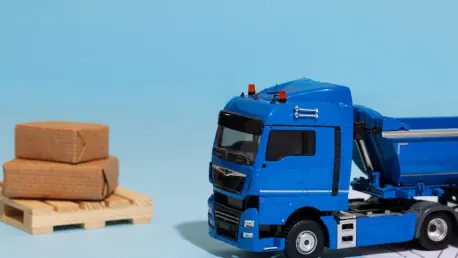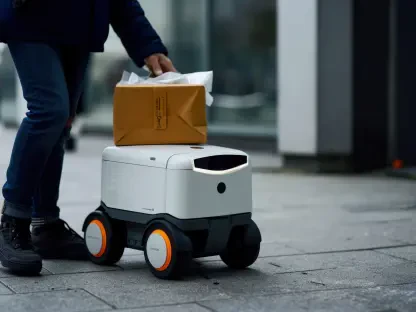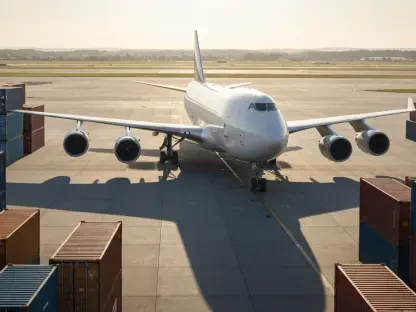The global logistics and transportation sector is undergoing transformative changes, driven by the innovative Truck-as-a-Service (TaaS) model. Combining advanced technology with adaptable business solutions, TaaS is set to reshape the trucking industry drastically. With the market projected to exceed $220.1 billion by 2032, the demand for efficient, cost-effective, and sustainable logistics solutions is more urgent than ever. Through technological advancements and sustainable practices, TaaS is poised to address many challenges facing traditional trucking operations.
Understanding Truck-as-a-Service (TaaS)
Truck-as-a-Service represents a comprehensive suite of digital and physical services that facilitate various aspects of truck ownership, leasing, maintenance, fleet management, and operations driven by data. Unlike traditional trucking models, TaaS aims to provide end-to-end solutions that simplify fleet management complexities. This is achieved by leveraging cloud platforms, IoT devices, telematics, and data analytics, enabling businesses to operate with greater agility and reduced overhead costs. By integrating these advanced technologies, TaaS allows companies to streamline their logistics operations seamlessly.
The core components of TaaS include real-time tracking, route optimization, and predictive maintenance, all of which are essential for efficient fleet management. Additionally, TaaS offers on-demand access to trucks through leasing and rental services, eliminating the financial burden of ownership. Centralized digital platforms provide interfaces for booking, tracking, and analytics, while scheduled and on-demand maintenance services maximize uptime. The integration of electric and autonomous trucks further supports the adoption of eco-friendly and self-driving technologies. As TaaS continues to evolve, it has the potential to make a substantial impact on the efficiency and sustainability of the trucking industry.
Key Market Drivers
Technological advancements have significantly advanced fleet management by integrating AI, machine learning, and IoT. Predictive analytics help operators anticipate maintenance needs, while real-time tracking aids in optimal route planning, effectively reducing fuel consumption and delivery times. The rapid growth of e-commerce has led to an unprecedented increase in demand for efficient last-mile delivery solutions. TaaS provides scalable options for businesses to meet this surge without extensive investments in infrastructure. Furthermore, the integration of technology into everyday operations enhances the overall efficiency and reliability of logistics services.
Sustainability initiatives are also driving the TaaS market as governments and organizations strive to reduce carbon emissions. TaaS providers are leading this change by offering electric and hybrid truck leasing options that comply with global sustainability objectives. Traditional trucking operations are associated with high capital expenditure and maintenance costs, but TaaS alleviates these financial constraints by offering flexible, subscription-based services. The adoption of autonomous vehicles is poised to revolutionize the industry by offering enhanced safety, lower operational costs, and improved efficiency. These key drivers collectively contribute to a more sustainable and economically viable trucking sector.
Market Segmentation
The TaaS market can be segmented by service type, truck type, and region. Service types include leasing and rental, maintenance and repair, managed services, and digital freight solutions. Truck types are categorized into light commercial vehicles (LCVs) and heavy commercial vehicles (HCVs). Regionally, North America leads due to advanced logistics infrastructure and early technology adoption, while Europe experiences significant growth driven by strict environmental regulations and sustainability objectives. Both regions are at the forefront of integrating new technologies into their logistics sectors, thereby setting benchmarks for the global industry.
The Asia-Pacific region is witnessing rapid urbanization and e-commerce expansion, creating a burgeoning market, while the rest of the world sees gradual adoption supported by infrastructure development. The diversity in regional adoption rates highlights the unique challenges and opportunities present in different parts of the globe. Companies operating in the TaaS market must tailor their strategies to fit the specific needs and regulatory landscapes of each region to maximize their impact and growth potential.
Challenges Facing the TaaS Market
Despite its potential, the TaaS market faces several challenges. High initial costs for setup and technology integration can be prohibitive, particularly for small and medium enterprises. Regulatory hurdles, such as variations in transportation regulations across regions, can complicate operations for global TaaS providers. Such regulatory discrepancies require companies to navigate complex compliance landscapes, which can impede the seamless implementation of TaaS solutions.
Cybersecurity concerns are also prevalent, as TaaS platforms rely heavily on digital infrastructure, making them vulnerable to cyber threats. Ensuring data security and maintaining customer trust are critical challenges. Additionally, traditional fleet owners may be resistant to adopting TaaS due to a preference for familiar systems and skepticism about new technologies. Overcoming these barriers will require targeted education and demonstration of the distinct advantages offered by TaaS. Companies must address these concerns head-on to secure widespread adoption and trust in their innovative solutions.
Future Prospects
The global logistics and transportation sector is witnessing transformative changes, primarily driven by the innovative Truck-as-a-Service (TaaS) model. This model seamlessly merges advanced technology with flexible business solutions, poised to revolutionize the trucking industry. Industry projections estimate the market will surpass $220.1 billion by 2032, highlighting the surging demand for efficient, cost-effective, and sustainable logistics solutions.
TaaS leverages technological advancements to streamline operations, optimize routes, and reduce downtime, ensuring higher efficiency. Additionally, sustainable practices integrated into TaaS models address critical environmental concerns, making the industry more eco-friendly. This approach not only mitigates many challenges associated with traditional trucking but also paves the way for a greener, more resilient future in logistics. By embracing this innovative model, the transport industry can meet contemporary demands while promoting sustainability and efficiency, marking a significant shift in global logistics dynamics.









